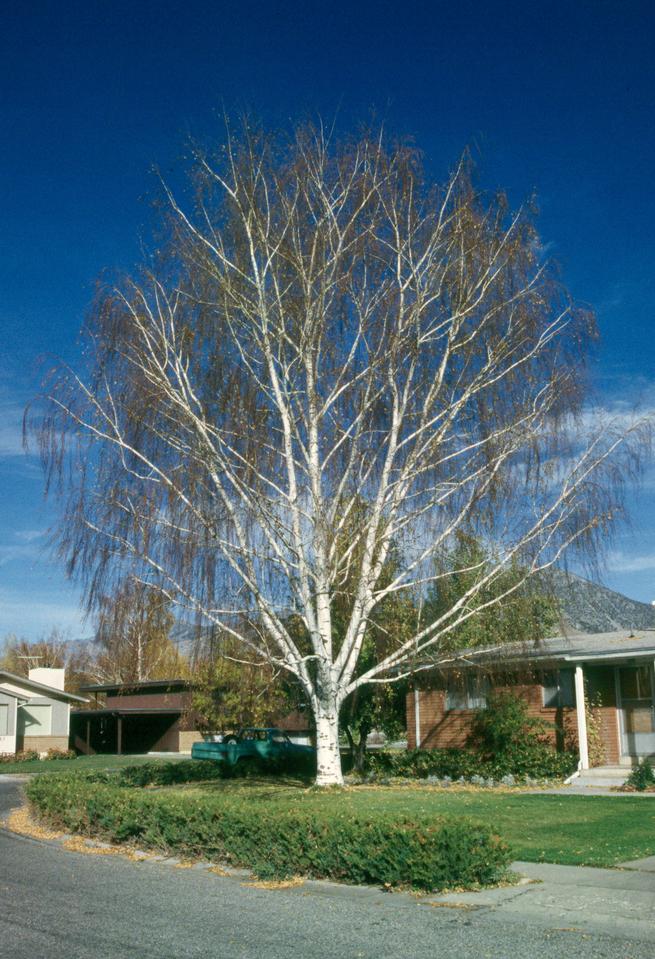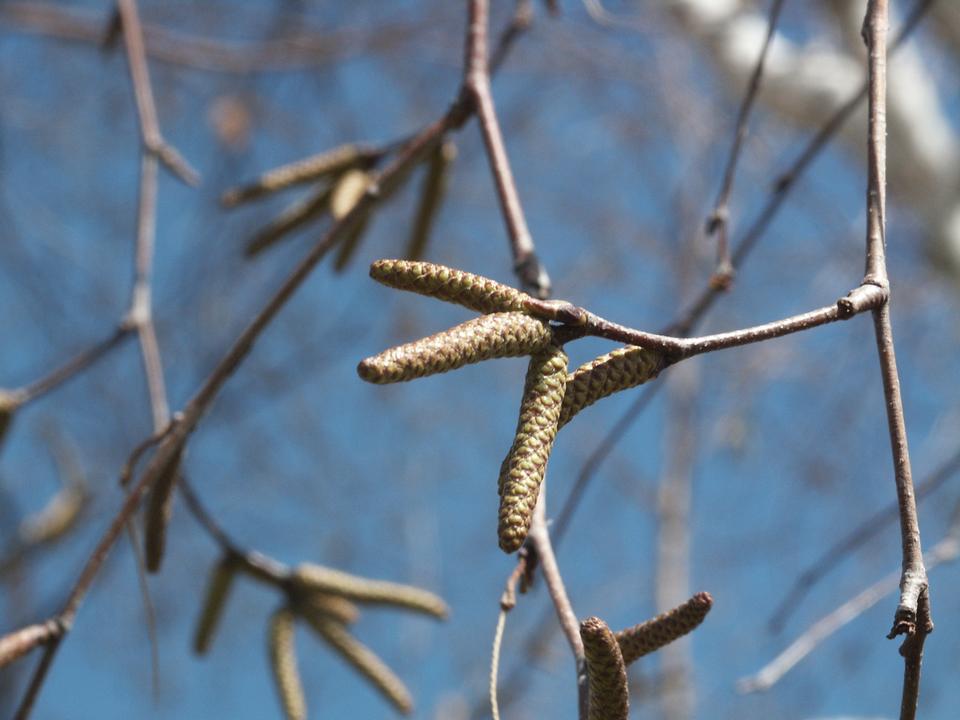Birch, European White
Betula pendula
Betulaceae - Birch
Description
Leaves: Alternate; simple; 1" to 3" long; 3/4" to 1-1/2" wide; deciduous; ovate to diamond-shaped; doubly serrate margin or finely-lobed on some cultivars; acute apex; rounded base; glabrous; dark green; petiole 1/2" to 3/4" long.
Twigs/buds: Twigs slender; brown; glabrous to somewhat glandular (bumpy); usually hang down giving the tree its "weeping" appearance. No terminal bud; lateral buds curved, pointed, brownish-black.
Flowers/fruit: Monoecious. Fruit small winged nutlets arranged in a cone-like catkin; cylindrical; hangs down; 3/4" to 1-1/4" long; scaly.
Bark: First brown; later becoming chalky-white with horizontal lenticels, occasionally splitting horizontally into thin papery strips, but not like paper birch; bark on older stems develops rough, black, vertical furrows.
Wood: Moderately important where native, but not in U.S. See water birch for general description.
General: Native to Europe and northern Asia. Often planted in Utah. Likes moist, well-drained soils but tolerates dryer soils and high soil pH. Shade intolerant. May be insect and/or disease prone, especially when stressed. Prefers abundant water, but may survive on drier sites.
Landscape Use: Beautiful tree with graceful, weeping habit and dramatic bark color; many cultivars. Severely affected by borers in much of Utah. However, I have seen many older, healthy, apparently borer-free trees in northern Utah (Box Elder and Cache Counties), so cooler, moister conditions may help ward-off borer infestations. Zones 2-7.
Cultivars: 'Fastigiata', 'Gracilis', 'Laciniata', 'Purpurea', 'Tristis', 'Trost's Dwarf', 'Youngii'.
Characteristics
General
| Family | Betulaceae - Birch |
|---|---|
| Cultivar Availability | Yes |
| Hardiness Zone | 2-7 |
| Type | Broadleaf |
| Utah Native | No |
Growth
| Growth Rate | Medium |
|---|---|
| Mature Height | High |
| Longevity | Medium |
| Is Good Under Power Lines | No |
| Crown Shapes | Pyramidal |
Ornamental
| Bark | Yes |
|---|---|
| Fall Color | Yes |
| Flowers | No |
| Foliage | No |
| Fruit | No |
Tolerance
| Shade | Medium |
|---|---|
| Salt | Medium |
| Drought | Low |
| Poor Drainage | Low |
| Alkalinity | Medium |
| Transplanting | High |






